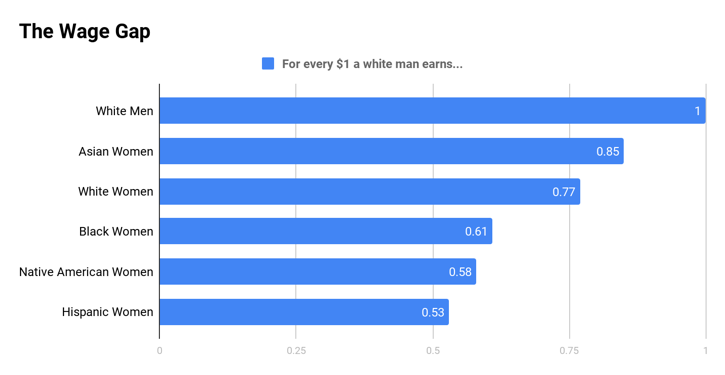Basics

The Gender Wage Gap
Workforce
Published on July 17, 2019
Overview
In the United States, women earn less than men in nearly every single occupation regardless of one’s qualification. This gap can be explained by many measurable factors such as educational attainment, occupational segregation, and work experience. According to the Census Bureau, in 2017, female full-time, year-round workers made only 80.5 cents for every dollar earned by men.
The Causes
Various factors cause the gender pay gap and these can vary by state. Some of the causes include: the primary industry in the state and the resulting opportunities; demographics such as race and ethnicity, age, and education level. Additional causes include regional differences in attitudes and beliefs about work and gender, and differences in the scope and strength of state pay discrimination laws and policies. Furthermore, many employer practices such as not talking about one’s salary continue to compound the problem. Also, the wage gap varies by state. Louisiana has the largest gap with a gender pay ratio of 69%, while California has the smallest gender gap ratio with 89%.
Earning Differences by Race

American Indian, Alaska Native, Black and Hispanic women earn 26 percent less than White men. Overall, about four-in-ten working women said they have experienced gender discrimination at work. One of the most commonly reported forms of discrimination resulted from earnings inequality. Specifically, one-in-four employed women said they have earned less than a man who was doing the same job.
Additionally, one’s age and decision to have a child causes more pay gaps. The 2018 wage gap was smaller for adults ages 25 to 34 than for all workers 35 and older. Also, family caregiving responsibilities also can have a significant impact on long-term earnings. Among mothers who took leave from work in the two years following the birth or adoption of their child, 25% of women said it had a negative impact at work, compared with 13% of men.
One’s industry can also have additional implications. For example, data from the Bureau of Labor Statistics found that women tend to be overrepresented in traditionally lower-paying occupations such as Healthcare, Personal Care & Service, Education, Office & Administrative Support, and Community & Social Services. Traditionally, men are overrepresented in higher paying occupations such as Engineering and Computer Science.
The Impacts
If pay inequality continues in the United States, the economic consequences will continue. If women who worked in the same jobs as men were paid the same, about 60% of women would see a pay increase. Equal pay for men and women would cut poverty among women in half and add about $513 billion, or 2.8 percent of the 2016 gross domestic product, to the United States economy. Additionally, the pay gap costs American women $10,139 each year. When this number was applied over the course of a 40-year career, it totals $403,440.
Conclusion
According to multiple sources, if the pace of change in the annual earning ratio continues at the same rate, it will take 40 years, until 2059, for White women to finally reach pay parity with White men. For women of color, reaching this pay parity will take even longer. Hispanic women will be paid equally in 2224 and Black women in 2119. As this problem continues, many candidates in the 2020 Democratic Presidential Primary have introduced policies and spoken to the importance of closing the gender wage gap.
Key Facts
- Opportunity Gap: the structural barriers that keep women from advancing in the workplace.
- The Controlled Gender Pay Gap: controls for factors such as job title, years of experience, industry, and location. The gap has not significantly decreased, it has shrunk by $0.008 since 2015.
- Equal Pay Day was started in 1996 to highlight the gap between men and women’s wages. It is held every April to symbolize how far into the year women need to work to make what men did in the previous year.
- Equal Pay Day for Latinas and Black women are later in the calendar year because these minority groups typically earn less than White women.
Links to Other Resources
- American Association of University Women – The Simple Truth about the Gender Pay Gap
- Institute for Women’s Policy Research – The gender wage gap: 2018 – Earnings Differences by Race and Ethnicity
- Institute for Women’s Policy Research – Pay Equity and Discrimination
- Money – Here’s Where All the 2020 Presidential Candidates Stand on Key Workplace Issues — From Paid Family Leave to Minimum Wage
- The New York Times – Womansplaining the Pay Gap
- Pay Scale- The State of the Gender Pay Gap in 2019
- Pew Research Center – The narrowing, but persistent, gender gap in pay